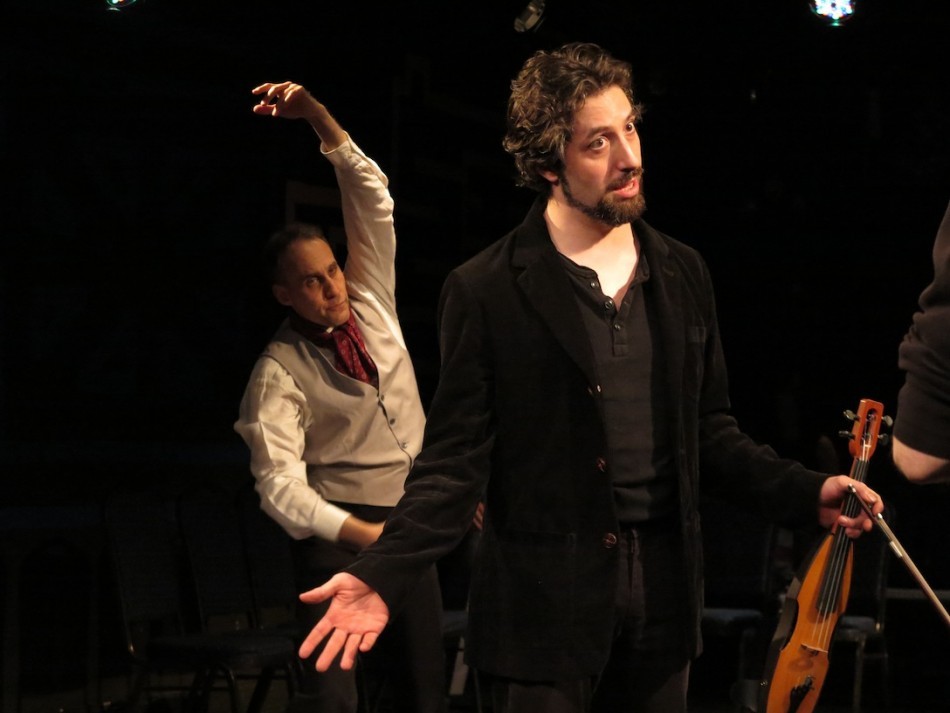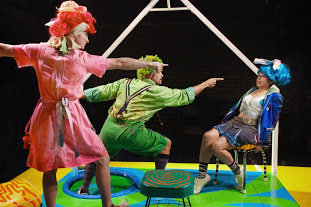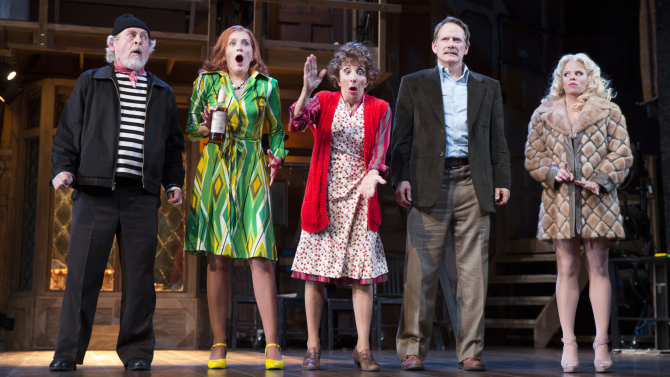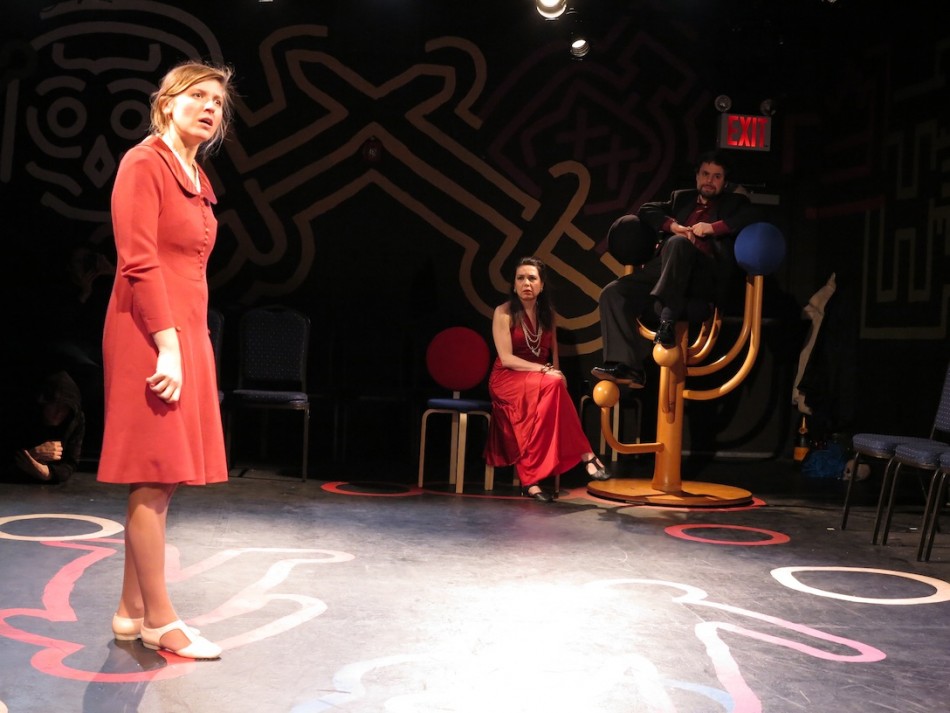

by JK Clarke
Prior to attending First Maria’s production of Hamlet at Teatro Círculo in the East Village, I had mistakenly fallen under the impression that I would be seeing some sort of Italian production of Shakespeare’s greatest play. As there has been a trend toward derivative and bizarre versions of the play of late, I braced myself for an unusual experience. But I couldn’t have been more mistaken. First Maria’s Hamlet is . . . Hamlet. And a darned good one, at that.
A company that performs such a significant play with a relatively smallish cast (11 players in this case) is somewhat obligated to streamline and simplify it. What First Maria’s Director Celeste Maratti has done in this vein is to eliminate the military components of the play, like the looming war with Fortinbras of Norway. This is a very Hamlet-centric production, with the young prince passionately played by Alexander Sovronsky. He’s not crazy, though he finds himself wondering if he might be—and why not, his seemingly promiscuous mother, Queen Gertrude (played by the director, Moratti, in a sexy red dress with a low slung back), has quickly jumped into a very passionate marriage with his uncle only two months after his father’s death . . . which Hamlet has just learned was murder, at the hands of this same uncle. This is a disillusioned, deeply wounded Hamlet. We get the impression that his life was pretty smooth and easy prior to all this. He was a student abroad with many close friends, who indulged in theater arts and and was an expert and practiced swordsman.
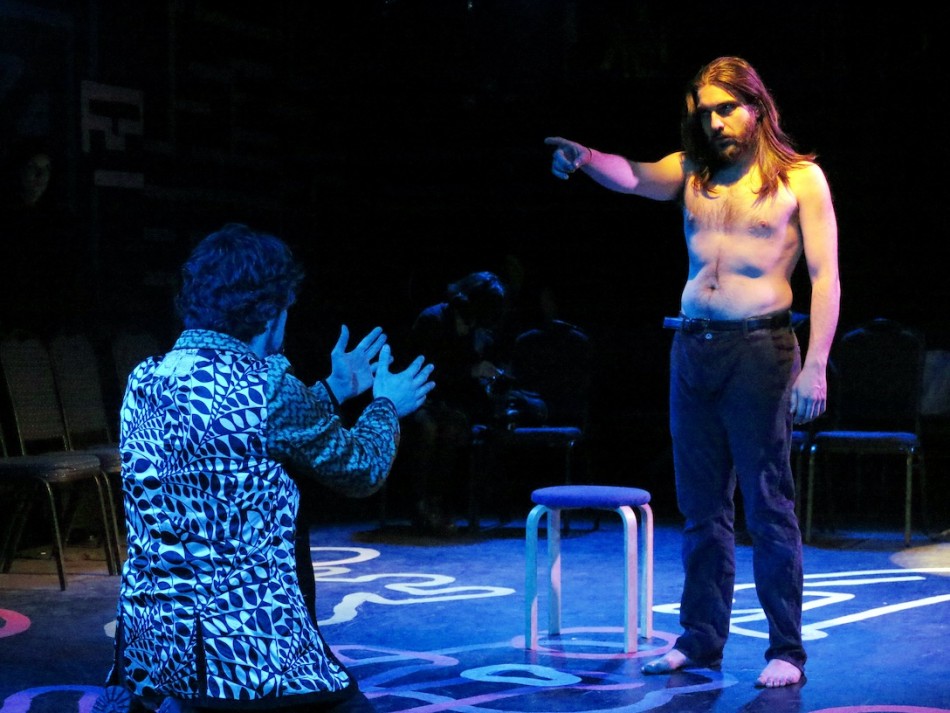

First Maria’s Hamlet is highly stylized, and very effectively so for the most part. One notices upon entry the Teatro Círculo’s black walls are tastefully illustrated with Keith Haring-esque images that abstractly represent scenes and moments in the play. What’s more, the floor is painted with the crime-scene style outlines of four bodies, presumably foreshadowing the play’s end. During the performance, the actors themselves weave in and the audience, but dressed in black, with black cloaks over their heads, rendering them all but invisible in the darkness. When their character enters a scene they shed the cloak, making them almost appear out of nowhere. While off-stage the actors sometimes whisper, chant or sing (such as during the Ghost scenes), adding to the mystery and tension. Occasionally it’s a bit distracting, but for the most part it’s a terrifically creative enhancement, especially coupled with the live, ominous and mostly percussive music (Francesco Santalucia, Sovronksy and Papceccio) that lays just under the action and augments several scenes that are often dry (such as the visit from the Players). While the rest of the costuming (Raffaella Toni) is said in program notes to be of the 1970s and 80s, it must be more European than American, because no one dressed that stylishly here in that era. The garments have more American 1930s and 40s than later decades. And Jessica Sovronsky’s minimal set has deeply impactful components, particularly a strange, modern furniture piece featuring large round, colorful balls and round cushioned that resembles more the tree that Ophelia hangs herself from than the throne it serves as for both kings, living and dead. The chair’s gnarled, unevenness belie its inappropriate appropriation.
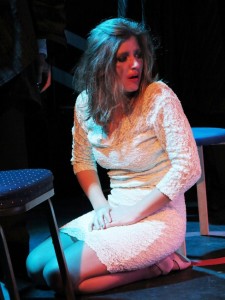

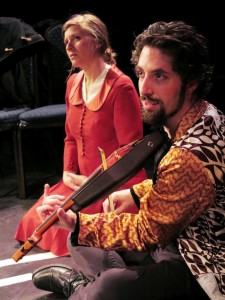

There are other performances that round out the production and make it great: the Ghost (Giacomo Rochini, who appealingly stands out from the other actors, having a different acting style—but he’s a ghost, after all) of Hamlet’s dead father is not played as scripted wearing full battle gear, but rather as a shirtless, wild-haired, frightened lost soul, surrounded by otherworldly creatures (demons?) who cling to and pull at him like in Rodin’s sculptural depiction of “Ugolino and his Sons” from Dante’s Inferno. Also, it seems the Ghost may also make an appearance in the same shoeless, shirtless form along with the Players (in fact, the one who plays the King). It’s an eerie and thought-provoking touch that adds several unexpected angles in this play where the dead very much play a role in the lives of the living. Also compelling is Doria Bramante’s Ophelia who, like Hamlet, seems attractive and well adjusted at the outset. It’s only heartbreak that, understandably, ruins them both—we understand both why Hamlet likes her and, when disillusioned with the world, pushes her away.
This season has seen a lot of good small-company productions of Shakespeare plays, and First Maria’s Hamlet is one of the best. It’s not easy to do a small production of Hamlet and really pull it off, but theirs is beautifully designed, expertly acted and exciting to watch. Hamlet is a thoroughly fulfilling and fascinating play to see when it’s done well, and this one, especially at it’s extremely affordable ticket price, is not to be missed.
Hamlet. Through March 20 at Teatro Circolo (64 East 4th Street, between 2nd Avenue and the Bowery). www.firstmaria.com
Photos by Remy S.


